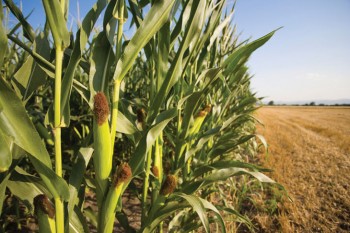Fungicide use in corn
for Agriculture and Natural Resources
Fungicide use in corn has become a common production practice for some farms while others are reluctant to adopt the technology. Actually, both are correct in that decision. The strobilurin fungicides are highly effective in controlling gray leaf spot, but if the environmental conditions are not present to allow gray leaf spot to flourish then the applications are unnecessary.
The factors that increase the possibility of fungicide protecting yield are no different this year than any other. That being said, the likelihood of a yield response with fungicide may be higher than usual given the cooler temperatures, frequent rain and later planting.
The first step is studying the varieties you planted to know what the gray leaf spot rating is for that corn. Varieties with a high level of resistance are less likely to need fungicide protection than those with low level of resistance. Planting date is another factor that influences gray leaf spot. While there is no specific date to go by, it is known that gray leaf spot is typically worse in corn planted later in the spring. Tillage practice and cropping history play a role as well. The pathogen that causes gray leaf spot overwinters in Kentucky on plant residue. Fields that are rotated should have a lower population of inoculum built up than continuous corn fields. Likewise, continuous no-till environments may contain greater levels of inoculum where tillage was used to bury residue. The ability to irrigate has increased dramatically in the past few years. Moisture is one of the factors gray leaf spot needs to flourish so those fields may be more at risk if the current dry periods are prolonged.
Determining if enough fungus is present to justify the expense of application is difficult. Iowa State University has done a lot of work on this topic and their consensus is if gray leaf spot is located on the third leaf below the ear leaf on at least half of the plants in the field, then application is justified. The greatest risk to fungicide in corn is not breaking even on the expense, but actually reducing yield. It is known that in certain situations, fungicide applications may reduce yield. This is caused by spraying too early in the reproduction process where pollination is disrupted.
If you plan to spray, wait until the pollination process is complete to ensure that its success is not compromised. Some suggest waiting until the silks are completely dried down. This is certainly long enough to ensure pollination is complete, but if gray leaf spot is present and advancing, getting fungicide on as soon as it is safe to do so is important to allow the fungicide to provide as much return as possible.
Purchase Ag Spray Equipment at Agrimart.net

